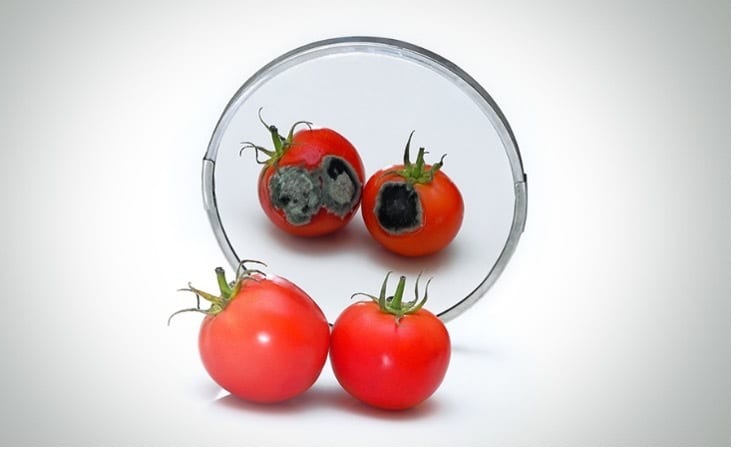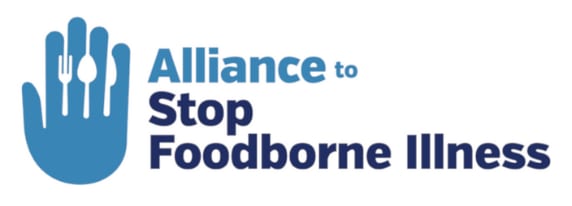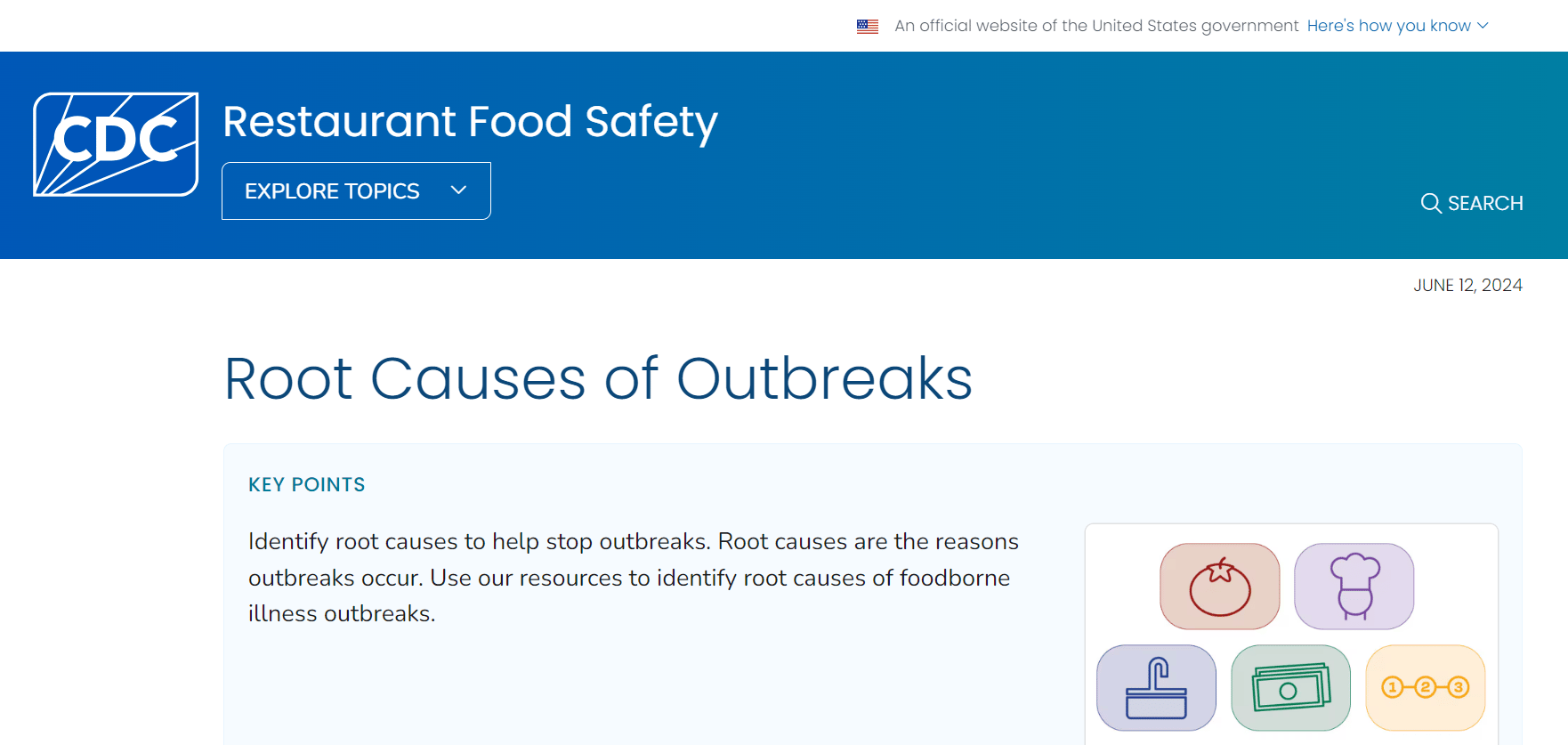
SCROLL
DOWN
The Move to –15 °C—an industry effort to lower frozen food storage and transportation temperature standards—has more than doubled its membership since its launch in 2023, representing stakeholders at every stage of the frozen food supply chain. The group was founded following the release of the "Three Degrees of Change" report, an academic paper providing evidence that a move from –18 °C to –15 °C could make a significant environmental impact without compromising food safety.
The frozen food temperature setpoint of –18 °C was established as an industry standard a century ago—a decision supported by little scientific evidence. Logistics technology has improved substantially since that time, and scientific literature shows that a 3 °C change in temperature could:
- Save 17.7 million metric tons of carbon dioxide per year, the equivalent annual emissions of 3.8 million cars annually
- Create energy savings of around 25 terawatt-hours (TW/h), equivalent to 8.63 percent of the UK's annual energy consumption
- Cut financial costs throughout the supply chain by at least 5 percent, and in some areas, by up to 12 percent.
Recognizing that a shift in temperature set points from –18 °C to –15 °C requires a collaboration from the entire food cold chain, the Move to –15 °C recently secured support from Nomad Foods, Europe's leading frozen food manufacturer. In February 2024, Nomad Foods released study results revealing that storing frozen food at –15 °C, instead of the industry standard –18 °C, can reduce freezer energy consumption by 10–11 percent without any noticeable impact on product food safety, texture, taste, or nutritional value.
Other key players within the food industry that have also shown their commitment to the Move to –15 °C include international Danish food company, Danish Crown; worldwide transport and logistics provider, Blue Water Shipping; Europe's second-largest cold logistics operator, Constellation Cold Logistics; and Indicold, provider of cold storage and logistics solutions in India. Moreover, one of the largest purchasers and lessors of refrigerated containers in the world, Seacube Container Leasing, in collaboration with internet of things (IoT) technology pioneers Orbcomm and Seafrigo, has developed a worldwide network within the refrigerated space, and has also recently joined the Coalition.

Frozen Food Industry Group Strives to Reduce Storage Temperature Standards by 3 °C
CDC Data Suggests Stalled Progress Toward Foodborne Illness Incidence Reduction Goals
Image credit: Dr_Microbe/iStock / Getty Images Plus via Getty Images

The U.S. Centers for Disease Control and Prevention (CDC) recently released new foodborne illness incidence data that show a lack of progress toward disease reduction goals—but that may be attributed to an increased use of culture-independent diagnostic tests (CIDTs), which allows for the diagnosis of infections that previously would have gone undetected.
Reducing the incidence of foodborne and enteric diseases is a priority of CDC. The Healthy People 2030 (HP2030) initiative establishes disease reduction goals for Campylobacter, Listeria monocytogenes, Salmonella, and Shiga toxin-producing Escherichia coli (STEC) infections. To evaluate progress toward HP2030 goals, CDC's Foodborne Diseases Active Surveillance Network (FoodNet) monitors infections caused by eight pathogens transmitted commonly through food.
The latest report summarizes preliminary 2023 FoodNet data for foodborne illnesses caused by important pathogens and describes changes in incidence compared with average annual incidence during 2016–2018. During 2023, for domestically acquired infections, incidence of campylobacteriosis was highest, followed by salmonellosis and STEC infection. Incidences of domestically acquired campylobacteriosis, cyclosporiasis, STEC infection, vibriosis, and yersiniosis increased compared with those during 2016–2018, whereas listeriosis, salmonellosis, and shigellosis incidences remained stable.
Overall, the percentage of infections attributable to specific Campylobacter, Shigella, Vibrio, and Yersinia species, as well as Salmonella serotypes and STEC serogroups, was lower in 2023 than in all previous years. During 2023, 78 percent of all bacterial infections were diagnosed by CIDTs, including 46 percent diagnosed using only CIDTs. The percentage of CIDT-diagnosed infections for which a reflex culture was attempted decreased from 71 percent during 2016–2018 to 68 percent during 2023. This decrease was largest for Yersinia, Vibrio, and STEC infections.
For all illnesses except listeriosis, the percentage of reflex cultures that successfully yielded an isolate was lower in 2023 than during previous years. This decrease in isolate availability has been associated with a decrease in serotyped, serogrouped, and speciated infections. For example, from 2016–2018 to 2023, the overall incidence of unspeciated infections increased substantially for Campylobacter, Shigella, Yersinia, and Vibrio; the percentage of speciated infections declined from 33 percent to 26 percent for Campylobacter, from 65 percent to 41 percent for Shigella, from 49 percent to 23 percent for Yersinia, and from 61 percent to 34 percent for Vibrio. Although only culture-independent methods are used to diagnose cyclosporiasis, increases in CIDT-diagnosed cyclosporiasis and cyclosporiasis incidence reflect CIDT-driven increases in bacterial infection incidence.
Of 8,454 total (both domestically acquired and travel-associated) Salmonella infections during 2023, 83 percent yielded an isolate, and 89 percent of isolates were fully serotyped. The incidence of nonserotyped infections increased substantially. The incidences of the most frequently reported serotypes, S. Enteritidis and S. Newport, remained stable during 2023 compared with those during 2016–2018. On the other hand, the incidences of the next-most frequently reported serotypes, S. Typhimurium, S. Javiana, and S. I 4,[5],12:i:-, decreased substantially.
Of 3,351 total STEC infections in the historic catchment area during 2023, 57 percent yielded an isolate, and 87 percent of isolates were fully serogrouped. The incidence of nonserogrouped infections increased substantially in 2023 compared with that during 2016–2018. During 2023, STEC O157 incidence decreased compared with incidence during 2016–2018, and non-O157 STEC incidence remained stable.
During 2022, FoodNet identified 61 cases of postdiarrheal hemolytic uremic syndrome (HUS) in persons aged less than 18 years, including 39 among children aged less than 5 years. The incidence of postdiarrheal HUS among persons under 18 years (0.6 per 100,000 persons) and those under 5 years (1.4 per 100,000) remained stable in 2022 compared with that during 2016–2018.
CDC reports that the present findings and previous FoodNet reports suggest a lack of progress toward foodborne disease reduction goals; however, this outcome might reflect changing diagnostic practices such as the increased use of CIDTs rather than an actual increase in disease incidence. Increased use of CIDTs facilitates prompt clinical diagnosis and treatment, but also complicates the interpretation of surveillance data and trends because CIDT adoption has varied over time, among clinical labs, and by pathogen. In addition, although CIDTs are generally considered more sensitive than are culture-based methods, some have high false-positive rates for certain pathogens (e.g., Vibrio). Previous studies have indicated that increased CIDT use has resulted in the diagnosis of infections that previously would have gone undetected; increased use of CIDTs has been associated with marked increases in reported incidence.
Increases in CIDT-diagnosed infections are also associated with decreased rates of reflex culture, thereby reducing the number of isolates available for subtyping, whole genome sequencing (WGS), and antimicrobial resistance (AMR) characterization. The impact of this reduction differs by species, serotype, and serogroup. Since an isolate is required for speciation, serotyping, and serogrouping, reduced isolate availability might result in under-detection of illnesses attributable to specific Campylobacter, Shigella, Vibrio, and Yersinia species, as well as Salmonella serotypes and STEC serogroups. The substantial increase in the incidence of infections for which the pathogen was not speciated, serotyped, or serogrouped is likely a result of changing diagnostic practices (i.e., increased CIDT use), resulting in a reduced availability of isolates for speciation and typing.
Continued reductions in isolate availability might hinder outbreak identification and response (e.g., WGS-based cluster identification and source attribution), detection of emerging AMR, and tracking of trends in illnesses attributable to specific species, subtypes, serotypes, and resistant strains. Increasing successful reflex culture rates after a CIDT diagnosis is a priority of CDC, and it requires focused efforts and resources at the federal, state, and local levels
The U.S. Food and Drug Administration (FDA) has published an outline of its research priorities for Highly Pathogenic Avian Influenza (HPAI) H5N1, which was first detected in U.S. dairy cattle in March 2024 and has since been reported in multiple states. Since infection of dairy cattle is a relatively novel presentation of influenza, the agency seeks to address significant research needs to protect human and animal health.
FDA, alongside its federal and state partners, is following a step-by-step approach to its scientific analysis of commercial milk safety during the ongoing HPAI H5N1 outbreak affecting North American dairy cattle. Preliminary results of the agency's initial assessment of U.S. milk at retail continues to support the safety of the milk supply; however, a number of collective activities are still being undertaken to ensure the continued effectiveness of the federal-state milk safety system.
FDA is following a scientific process to inform its public health decisions related to food safety as outlined in the research agenda. The agency is completing its research and testing in partnership with both the U.S. Department of Agriculture's (USDA's) U.S. National Poultry Research Center and USDA's Animal and Plant Health Inspection Service's (APHIS') National Veterinary Services Laboratory. Certain research studies will be completed in partnership with universities. The agenda comprises three objectives:
- Objective 1: Understand characteristics of inactivation methods for H5N1 dairy products
- Objective 2: Determine the safety of retail dairy products
- Objective 3: One Health interventions for HPAI H5N1.
Objective 1 will focus on pasteurization temperature thresholds and durations required to effectively neutralize H5N1 HPAI. Efforts in multiple focus areas related to this objective are ongoing to better understand the efficacy of pasteurization and other inactivation methods:
- Testing pre-pasteurization milk samples: Testing pooled raw milk samples can be used as a basis to characterize potential virus levels that pasteurization may encounter. FDA is continuing to work with states on additional efforts to sample and build data on pre-pasteurization samples at different points in the milk production and processing system. The agency is also exploring innovative data management solutions (e.g., data trusts) as a potential way to organize and aggregate dynamic data sources in different types of analyses.
- Benchtop thermal inactivation kinetics studies: Benchtop equipment studies will provide information on an estimation of the time and temperature needed for inactivation of H5N1 HPAI virus in milk and milk products.
- Continuous flow pasteurization studies: Studies using continuous flow pasteurization equipment, reflective of those in commercial use, help confirm pasteurization parameters effective at inactivating H5N1 HPAI virus in milk processes.
- Raw milk cheese aging: The purpose of these studies is to assess the survival of H5N1 HPAI virus in raw milk cheeses under various parameters over the aging process.
To determine the safety of retail dairy products (Objective 2), FDA is sampling and testing milk at retail. In early July, FDA and USDA announced results from a first-of-its-kind study using the process typically used by commercial milk processors, which reaffirm that the commercial milk supply is safe. The goal of the study was to further confirm that pasteurization is effective at inactivating HPAI H5N1 virus in fluid milk and other dairy products made from pasteurized milk. The study found that the most commonly used pasteurization time and temperature requirements were effective at inactivating the HPAI H5N1 virus in milk.
FDA's second sampling survey is testing approximately 155 dairy products for H5N1 collected at retail locations, including fluid milk and products such as aged raw milk cheese, pasteurized milk and pasteurized cheeses, cream cheese, butter, and ice cream. The samples collected include dairy products processed in states that were not included in the agency's first phase of retail research. Additional samples are being taken from areas included in the previous survey to help provide a more representative picture based on the level of dairy product production that occurs in certain regions. FDA expects to conduct additional post-pasteurization testing to continue to monitor these products in the future.
Finally, FDA is issuing a One Health strategy to mitigate the impact of H5N1 HPAI virus (Objective 3). One Health interventions to prevent, control, or eliminate H5N1 HPAI in animals, milk, and the environment are under development; for example, strategies to decrease the impact of H5N1 HPAI, interventions to prevent or control spread of H5N1 HPAI, and alternative viral inactivation and disposal methods for discarded milk.

FDA Publishes Dairy Food Safety Research Agenda for HPAI H5N1
FDA Releases New Food Fraud Webpage
The U.S. Food and Drug Administration (FDA) has released a new website on economically motivated adulteration (EMA), including food fraud. The purpose of the website is to keep businesses and consumers informed on the latest food fraud developments.
The website includes links on how to report food fraud; examples of food adulteration; how food fraud is detected and monitored; enforcement and legal consequences, such as recalls, seizures, and import refusals; guidance documents to assist manufacturers and importers; and a list of import alerts.
EMA occurs when "someone intentionally leaves out, takes out, or substitutes a valuable ingredient or part of a food," according to FDA. EMA also occurs when a substance is added to a food to make it appear better or of greater value.
Food fraud is a common type of EMA that FDA investigates, but EMA also occurs with other products, including animal food and cosmetics. Some types of EMA are also misbranding violations. Estimating how frequently food fraud occurs or its exact economic impact can be challenging because food fraud is designed to avoid detection. Outside estimates by experts have found that food fraud affects 1 percent of the global food industry at a cost of approximately $10–$15 billion per year, although more recent expert estimates peg the cost as high as $40 billion per year.
Food fraud can also lead to major health issues and even death. Some examples include lead poisoning from adulterated spices and allergic reactions to a hidden or substituted ingredient that contains a small amount of just one food allergen.
Click here to visit FDA’s new EMA website.

Image credit: Dr_Microbe/iStock / Getty Images Plus via Getty Images
Effective August 2, 2024, FDA has revoked its authorization of the use of brominated vegetable oil (BVO) in food due to studies showing the potential for adverse health effects to humans. The compliance date is one year after the effective date, by which point companies must reformulate, relabel, and deplete their inventories of BVO-containing products.
Conducted in collaboration with the U.S. National Institutes of Health (NIH), the study that prompted FDA to revoke its authorization of BVO in food showed damaging effects on the thyroid. Specifically, scientists conducted a 90-day dietary exposure study in Sprague Dawley rats and analyzed tissue distribution of the main metabolites. Male and female rats aged six weeks were fed diets containing varying amounts of BVO by weight. Statistically significant increases were observed in the serum bromide in the high-dose group of both sexes; as well as in the incidence of thyroid follicular cell hypertrophy in the two highest dose groups of males and in the high-dose group of females. An increase in thyroid stimulating hormone (TSH) serum was observed in the high-dose group for both sexes, as well as a decrease in serum T4 in the high-dose males. A clear dose-response was observed in di- and tetra-bromostearic acid levels in the heart, liver, and inguinal fat.
The findings of the NIH study expand upon previous observations in rats and pigs that oral exposure to BVO is associated with increased tissue levels of inorganic and organic bromine, and that the thyroid is a potential target organ of toxicity.
FDA has regulated BVO as a food additive since the agency removed it from the list of Generally Recognized As Safe (GRAS) substances in 1970. As authorized, it was used in small amounts to keep the citrus flavoring from floating to the top in some beverages, and manufacturers were required to list BVO, or the specific type of BVO such as brominated soybean oil, in the ingredients list if it was used. In the present day, few beverages in the U.S. contain BVO.
FDA's revocation of its regulation authorizing BVO for use in food is the result of its efforts to strengthen systematic post-market chemical reassessment, following a recent uptick in state legislative action to regulate food additives. BVO is one of the food additives banned by the 2023 California Food Safety Act, and is the target of similar pieces of legislation pending in other states.

BVO No Longer Authorized for Food Use by FDA
FDA has revealed preliminary findings from a multi-year environmental study of a specific growing region in the Southwest U.S., which sought to better understand the ecology of human pathogens in the environment. The research was conducted in partnership with the Arizona Department of Agriculture, and in conjunction with the University of Arizona Cooperative Extension, the Wellton-Mohawk Irrigation and Drainage District (WMIDD), and members of the leafy greens industry.
From May 2019—April 2024, environmental samples were collected from irrigation and other surface waters, soil, sediment, air dust, animal fecal material, wildlife scat, plant tissue, and other sources across an approximately 54-mile area within the growing region. Through repeated sample collection, testing, measurement, and analysis, the team was able to observe variability of pathogens in this region over time, providing new insights about pathogen prevalence, location, and potential influencing factors, such as seasonality, weather conditions, and animal activities on adjacent and nearby land.
The research team is continuing to analyze data from this study, but preliminary findings suggest:
- Shiga toxin-producing Escherichia coli (STEC) strains detected in water, sediment, and plant tissue genetically matched strains isolated in air samples, providing evidence that STEC in air can transfer to other locations and surfaces
- Air samples collected during the study yielded positive viable pathogen results, indicating that bacteria can survive in the air and that dust can act as a transfer mechanism for both pathogens and indicator organisms from adjacent and nearby land to water, soil, and plant tissue
- Surface water evaluated in the study experienced a change in water quality and an increase in the prevalence of STEC as water moved past a nearby Concentrated Animal Feeding Operation (CAFO), even in the absence of surface run-off or other direct contamination, which indicates that airborne disposition of dust from the CAFO was potentially a factor in the contamination of the irrigation water
- Distance played an important factor in the likelihood of STEC being detected in collected airborne dust, with the percentage of positive samples declining steadily as air sampling moved in an incremental manner away from concentrated animal operations
- Birds and other wildlife do not appear to be significant sources of STEC or E. coli O157:H7 in or around the part of the Southwest growing region evaluated; however, continued monitoring is warranted to reduce potential risk to produce, the environment, and water sources.
The study was initiated following the 2018 outbreak of E. coli O157:H7 linked to the consumption of leafy greens grown in the Southwest U.S. growing region. During the initial environmental assessment into that outbreak, FDA explained that the most likely way the lettuce had been contaminated was from the use of contaminated water from an irrigation canal; however, the agency noted that it could not rule out that there might be other sources or means of contamination that were not identified during the investigation. Importantly, while findings do suggest that airborne dispersal of the outbreak strain was likely a contributing factor, the study did not identify the specific source and route of contamination that contributed to the 2018 outbreak.
FDA shared that members of the Arizona leafy greens industry will be working through the Desert Food Safety Coalition to continue to explore the findings from the study and to improve food safety. This group intends to collaborate with the Arizona Department of Agriculture, University of Arizona Extension, Yuma Fresh Vegetable Association, Yuma Safe Produce Council, Arizona Farm Bureau, Arizona Leafy Green Marketing Agreement (AZ LGMA), Western Growers, USDA-APHIS Wildlife Services, Arizona Cattle Feeders' Association, additional grower and landowner coalition members, and other agricultural community stakeholders. While the results are regionally specific, the findings may also help address some knowledge gaps identified in the Leafy Greens STEC Action Plan, particularly concerning animal activities on adjacent and nearby land.

Study Shows STEC Can Spread Through Air to Contaminate Leafy Greens Crops
Brussels-based consumer watchdog group Safe Food Advocacy Europe (SAFE) recently published a position paper calling upon the European Food Safety Authority (EFSA) to set legally binding limits for contaminant acrylamide in foods, and is launching an awareness campaign to bring the issue of acrylamide into the public eye and onto the political agenda.
According to EFSA, acrylamide may be neurotoxic, genotoxic, carcinogenic, and damaging to reproductive and developmental health. Studies have also linked the contaminant to specific cancers, such as breast cancer. Although the European Commission (EC) acknowledged the need to set maximum limits for acrylamide in certain foods in EU Regulation 2017/2158, such levels have not yet been established.
Acrylamide is found in starchy, processed foods like crisps/chips, cookies/biscuits, and breakfast cereals. Testing by consumer advocacy groups found one-third of biscuits and wafers to exceed acrylamide benchmark levels. Additionally, studies found that, on average, crisps made of carrots, beetroots, or parsnips contained almost twice as much acrylamide as potato varieties, even though the alternative crisps were often perceived as healthier options. Moreover, the 2023 CVUA Stuttgart study also showed that a significant number of food products often exceed acrylamide benchmarks; specifically, French fries, potato chips, wheat-based breads, crispbread, instant coffee, gingerbread, crackers, cornflakes, and breakfast cereals. For these foods, 5–15 percent of all products tested were above EC acrylamide benchmarks.
Scientific literature has concluded that there is a need to reduce acrylamide concentrations in baked goods by changing industry-standard methods, including baking at lower temperatures or using alternative baking techniques.
In light of the health risks of acrylamide and its problematic presence in certain foods, SAFE is calling upon EFSA to:
- Define legally binding maximum levels for acrylamide in all high-risk food categories, such as potato crisps, breakfast products, and French fries
- Establish legally binding maximum levels for acrylamide in baby foods well below the value of 50 micrograms per kilogram (μg/kg), as studies suggest that achievable acrylamide levels in baby foods could be as low as 1 μg/kg
- Establish legally binding maximum levels for acrylamide in biscuits and other foods intended for babies and young children, well below the value of 150 μg/kg
- Lower the benchmark level for breakfast cereal products consumed by children below 3 years of age
- Include additional food categories in the regulation of acrylamide levels, such as roasted nuts and vegetable crisps.

Consumer Advocates Urge EFSA to Set Maximum Levels for Acrylamide in Foods
A recent study conducted by researchers with the University of Vienna and the Hebrew University of Jerusalem has found tire-derived compounds in leafy greens samples, indicating that chemicals in tires are taken up by crops. Particles from tires and road wear are significant contributors to the abundance of microplastics entering the environment. Estimates of tire and road wear particle emissions range widely, from 0.9 to 2.5 kilograms (kg) per capita per year, which corresponds to between 24 percent and 94 percent of total microplastics emissions. Moreover, tire and road wear particles have been estimated to contain 5–10 percent organic and inorganic additives by weight, for many of which toxicity has been established. Despite its prevalence, tire and road wear particle pollution is still poorly understood.
In light of the mounting evidence demonstrating biological effects of tire-derived compounds, as well as their recent detection in human urine, the researchers sought to investigate the concentration of tire-derived compounds in commercial produce and the exposure via dietary intake. The researchers focused on leafy greens crops because leaves have been shown to accumulate more organic contaminants than other plant organs.
For the study, the scientists collected and analyzed two sets of leafy vegetable samples, including spinach, lettuce, and kale. The samples were collected from retailers in Switzerland between February and April 2023, and from commercial fields in Israel in 2017. The samples purchased in Switzerland were grown domestically, and were also imported from Italy and Spain. Samples were shipped frozen to Austria for analysis; samples from both sample sets were extracted between March and May 2023.
The researchers detected six tire-derived compounds, with at least one compound present in 71 percent of samples. Based on the presence of the tire-derived compounds in the samples and local dietary habits, the researchers estimated a total daily intake of the chemicals of 0.04–1.296 nanograms (ng) per person per day, depending on individual leafy green consumption.
Statistical analyses did not reveal correlation between known growth conditions and tire-derived compound concentrations in the leafy vegetable samples, and the estimated daily intake of these compounds via leafy vegetable consumption was generally lower than or comparable to the estimated daily intake through other known sources. Still, the study demonstrates that tire-derived compounds are taken up by foods, and the researchers speculate that exposure to these compounds might be higher for other produce. The findings point to the need for future research into exposure of the transformation products of tire-derived compounds and the biological effects associated with this exposure.

Chemicals from Tires and Roads Detected in Leafy Greens

Netherlands-based cultivated meat company Meatable appointed Jeff ("Trip") Tripician as its new CEO. Tripician will lead the company in its U.S. market expansion plans.
Ingredient supplier Icon Foods announced a significant leadership succession as Kash Rocheleau was appointed CEO and Thom King, the company's longtime CEO and founder, has assumed the new role of Chief Innovations Officer.
Seaboard Foods announced the appointment of Chad Groves as the company's new President and CEO.
Grass Fed Foods announced Kevin Pallaoro as its new President. Pallaoro previously served as CFO for the company, which includes the Teton Waters Ranch and Sunfed Ranch brands.
Wayne-Sanderson Farms promoted David Gadd to Senior Vice President and General Manager of the Retail Business Unit.
Arjoon Bose was appointed as Bel Group's Chief Marketing and Digital Officer.
Scott Hardiman was named President of STX Beef Co. LLC.

TRIPICIAN

GROVES

PALLAORO

GADD
Sprague Pest Solutions has appointed Ross Treleven to the dual role of CEO and President. Treleven has been serving as the President since January 2021.

Four Companies Join Alliance to Stop Foodborne Illness
Launched in 2018 with ten companies, the Alliance to Stop Foodborne Illness now boasts over 20 industry partners, including new members Kellanova and W.K. Kellogg (formerly Kellogg Company), the National Restaurant Association, and International Dairy Foods Association. The Kellogg Company was previously a member of the Alliance, and the two companies newly formed out of the Kellogg Company—W.K. Kellogg Co and Kellanova—have rejoined as independent entities.

ImagoAI, USDA Collaborate to Develop Handheld Mycotoxins Test
ImagoAI Inc. has entered a new collaboration with USDA to develop a handheld mycotoxins test that can produce rapid results on the spot. ImagoAI's Galaxy mycotoxins test, a first-of-its-kind rapid and eco-friendly mycotoxins test, has recently received the AOAC PTM certificate, making it the world's first certified hyperspectral imaging-based mycotoxins test. Galaxy delivers mycotoxins results in under 30 seconds without requiring any chemical consumables or reagents. The handheld version of Galaxy, called GalaxyLyte, will retain the powerful capabilities of its benchtop predecessor, ensuring that it continues to deliver fast and accurate results.

CFS Announces First-of-its-Kind Hygienic Design Certification

Commercial Food Sanitation (CFS) is adding to its portfolio of training certifications with its new Hygienic Design Certification. The CFS Hygienic Design Certification will give participants the tools and skills to apply, improve, and maintain hygienic design in their food processing facilities. The Hygienic Design Certification is the first of its kind and combines digital learning with in-person training sessions. Participants will complete five prerequisite online modules, an in-person Hygienic Design Training (HDT) session at a global training location, and additional online modules to deepen hygienic design knowledge. The recertification program—required every three years—will ensure that certification holder's education stays up to date.
USDA-FSIS Selects bioMérieux GENE-UP® E. coli Assay and GENE-UP® CAMPYLOBACTER as Methods of Choice

After an evaluation of commercially available pathogen screening technologies, bioMérieux's GENE-UP® Pathogenic Escherichia coli assay (PEC) has been selected by the USDA's Food Safety and Inspection Service's (USDA-FSIS') Field Service Laboratories as the primary method for Shiga toxin-producing E. coli (STEC) detection. USDA-FSIS has also selected bioMérieux's GENE-UP® CAMPYLOBACTER assay as a food safety testing methodology used by its Field Service Laboratories.
FSIS will use the bioMérieux GENE-UP® PEC platform to screen enriched samples received on or after September 16, 2024 for the adulterant STEC. The screening method adds efficiency by employing a novel molecular diagnostic target to rapidly identify samples containing STEC. FSIS expects that adoption of this new screening method will reduce the number of potential and presumptive positive STEC results that do not confirm positive with bioMérieux's current method. Meanwhile, GENE-UP® CAMPYLOBACTER is a real-time, polymerase chain reaction (PCR)-based solution that delivers results in under an hour and is AOAC-validated for a variety of enrichment media.
The GENE-UP® Pathogenic E. coli assay and the GENE-UP® CAMPYLOBACTER assay are the latest of bioMérieux's molecular diagnostic solutions to be recognized by food safety regulatory bodies in the U.S. Earlier in 2024, bioMérieux announced a research collaboration to improve microbial detection of foodborne pathogens with FDA, and in 2022, USDA named bioMérieux's GENE-UP® QUANT Salmonella quantification the method of choice in all FSIS laboratories. Both GENE-UP® QUANT Salmonella and TEMPO® solutions are currently included in the USDA Microbiology Laboratory Guidebook.
Hydrosome Labs Technology Set to Improve Precision Fermentation Process

Research has demonstrated the ability of a new technology from Hydrosome called Hydrosome H2O to solve multiple precision fermentation challenges. The new technology also has the potential to help solve a global industry bottleneck in fermentation capacity and equipment, allowing for the production of dramatically higher yields in the same size tanks or previously unsuitable tanks.
The technological breakthrough was facilitated by Hydrosome Labs' development of Hydrosome H2O—a natural and chemical-free process improving the power of water through the emerging science of ultrafine bubbles. The clean, green technology delivers active ingredients to cells more efficiently and completely. In addition to more efficient precision fermentations, commercial applications of the technology include helping plants grow faster and healthier with less fertilizer, and delivering faster, enhanced hydration in performance drinks.
ONLINE & OF NOTE
The U.S. Centers for Disease Control and Prevention (CDC) recently launched a new toolkit for identifying the root causes of foodborne illness outbreaks on its Restaurant Food Safety webpage. The toolkit provides an overview of root cause investigations, an explanation of the impact of root cause investigations, resources for carrying out root cause investigations, and the differences between root causes and contributing factors.
A resource included in the toolkit is a reference for users of the National Environmental Assessment Reporting System (NEARS), which is CDC's surveillance system to capture environmental assessment data from foodborne illness outbreak investigations. Food safety staff who use NEARS report information on root causes of foodborne illness outbreaks. NEARS informs the understanding of outbreaks in communities and enables action to stop them. CDC also uses this information to identify common root causes across outbreaks.
CDC Toolkit for Restaurants Conducting Foodborne Illness Root Cause Investigations

Employee Health Policy Tool
FDA has developed an Employee Health Policy Tool to encourage practices that can help prevent the transmission of foodborne viruses and bacteria in food establishments from ill employees. The tool will help users navigate restriction and exclusion requirements identified in Part 2-201 of the 2022 FDA Food Code using clickable pathways dependent upon the role of the user and the symptoms and/or diagnoses presented.
FDA Employee Health Policy Tool
Updated FSMA 204 Resources
FDA has also published additional resources to its website to help industry comply with the Food Traceability Final Rule. These include:
- A downloadable, electronic sortable spreadsheet template (download)
- Minor revisions to the Food Traceability List clarifying the status of previously frozen foods on the list, as well as a new FAQ summarizing the changes
- A chart summarizing exemptions relevant to produce farms for both the Produce Safety Rule and the Food Traceability Final Rule
- A supply chain example for sprouts
- New translated material about the Traceability Lot Code and the Traceability Plan.
FDA Releases Foodservice Employee Health Tool, Additional FSMA 204 Resources


